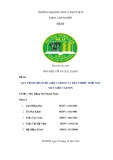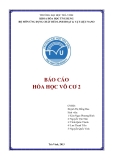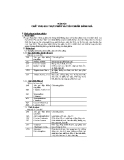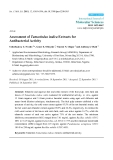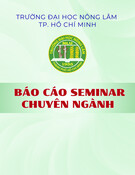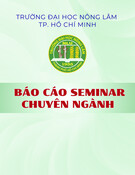
Hindawi Publishing Corporation
EURASIP Journal on Image and Video Processing
Volume 2007, Article ID 17173, 8pages
doi:10.1155/2007/17173
Research Article
Localized versus Locality-Preserving Subspace
Projections for Face Recognition
Iulian B. Ciocoiu1and Hariton N. Costin2, 3
1Faculty of Electronics and Telecommunications, “Gh. Asachi” Technical University of Ias¸i, 700506 Ias¸i, Romania
2Faculty of Medical Bioengineering, “Gr. T. Popa” University of Medicine and Pharmacy, 700115 Ias¸i, Romania
3Institute for Theoretical Computer Science, Romanian Academy, Ias¸i Branch, 700506 Ias¸i, Romania
Received 1 May 2006; Revised 10 September 2006; Accepted 26 March 2007
Recommended by Tim Cootes
Three different localized representation methods and a manifold learning approach to face recognition are compared in terms of
recognition accuracy. The techniques under investigation are (a) local nonnegative matrix factorization (LNMF); (b) independent
component analysis (ICA); (c) NMF with sparse constraints (NMFsc); (d) locality-preserving projections (Laplacian faces). A sys-
tematic comparative analysis is conducted in terms of distance metric used, number of selected features, and sources of variability
on AR and Olivetti face databases. Results indicate that the relative ranking of the methods is highly task-dependent, and the per-
formances vary significantly upon the distance metric used.
Copyright © 2007 I. B. Ciocoiu and H. N. Costin. This is an open access article distributed under the Creative Commons
Attribution License, which permits unrestricted use, distribution, and reproduction in any medium, provided the original work is
properly cited.
1. INTRODUCTION
Face recognition has represented for more than one decade
one of the most active research areas in pattern recognition.
A plethora of approaches has been proposed and evalua-
tion standards have been defined, but current solutions still
need to be improved in order to cope with the recognition
rates and robustness requirements of commercial products.
Anumberofrecentsurveys[1,2] review modern trends in
this area of research, including
(a) kernel-type extensions of classical linear subspace
projection methods such as kernel PCA/LDA/ICA [3–6];
(b) holistic versus component-based approaches [7,8],
compared in terms of stability to local deformations, light-
ing variations, and partial occlusion. The list is augmented
by representation procedures using space-localized basis im-
ages, three of which are described in the present paper;
(c) the assumption that many real-world data lying
near low-dimensional nonlinear manifolds exhibiting spe-
cific structure triggered the use of a significant set of man-
ifold learning strategies in face-oriented applications [9,10],
two of which are included in the present comparative analy-
sis.
Recent publications have addressed many other impor-
tant issues in still-face image processing, such as yielding ro-
bustness against most of the sources of variability, dealing
with the small sample size problem, or automatic detection
of fiducial points. Despite the continuously growing number
of solutions reported in the literature, little has been done
in order to make fair comparisons in terms of face recogni-
tion performances based on a unified measurement protocol
and using realistic (large) databases. A remarkable exception
is represented by the face recognition vendor test [11]con-
ducted by the National Institute of Standards and Technology
(NIST) since 2000 (following the widely known FERET eval-
uations), complemented by the face recognition grand chal-
lenge.
The present paper focuses on a systematic comparative
analysis of subspace projection methods using localized basis
functions, against techniques using locality-preserving con-
straints. We have conducted extensive computer experiments
on AR and Olivetti face databases and the techniques under
investigation are (a) local nonnegative matrix factorization
(LNMF) [12]; (b) independent component analysis (ICA)
[13]; (c) nonnegative Matrix Factorization with sparse con-
straints (NMFsc) [14]; and (d) locality-preserving projec-
tions (Laplacian faces) [9]. We have taken into account a
number of design issues, such as the type of distance met-
ric, the dimension of the feature vectors to be used for actual
classification, and the sources of face variability.






